What is human-centred design?
Human-centred design starts with the people involved, their goals, their needs and what makes them happy, and not so happy. Human-centred design is an approach to design and problem solving that aims to deeply empathise with people with the aim of creating effective, and even delightful, ways of achieving their goals. It changes the focus from problems to people to make sure we understand what really needs solving. It’s a bit like a great doctor who makes sure they understand the cause of illness to cure it, not just make symptoms go away. To heal instead of simply control symptoms, doctors need to holistically consider their patient’s body, health, diet and lifestyle. Human-centred design is also a holistic approach.
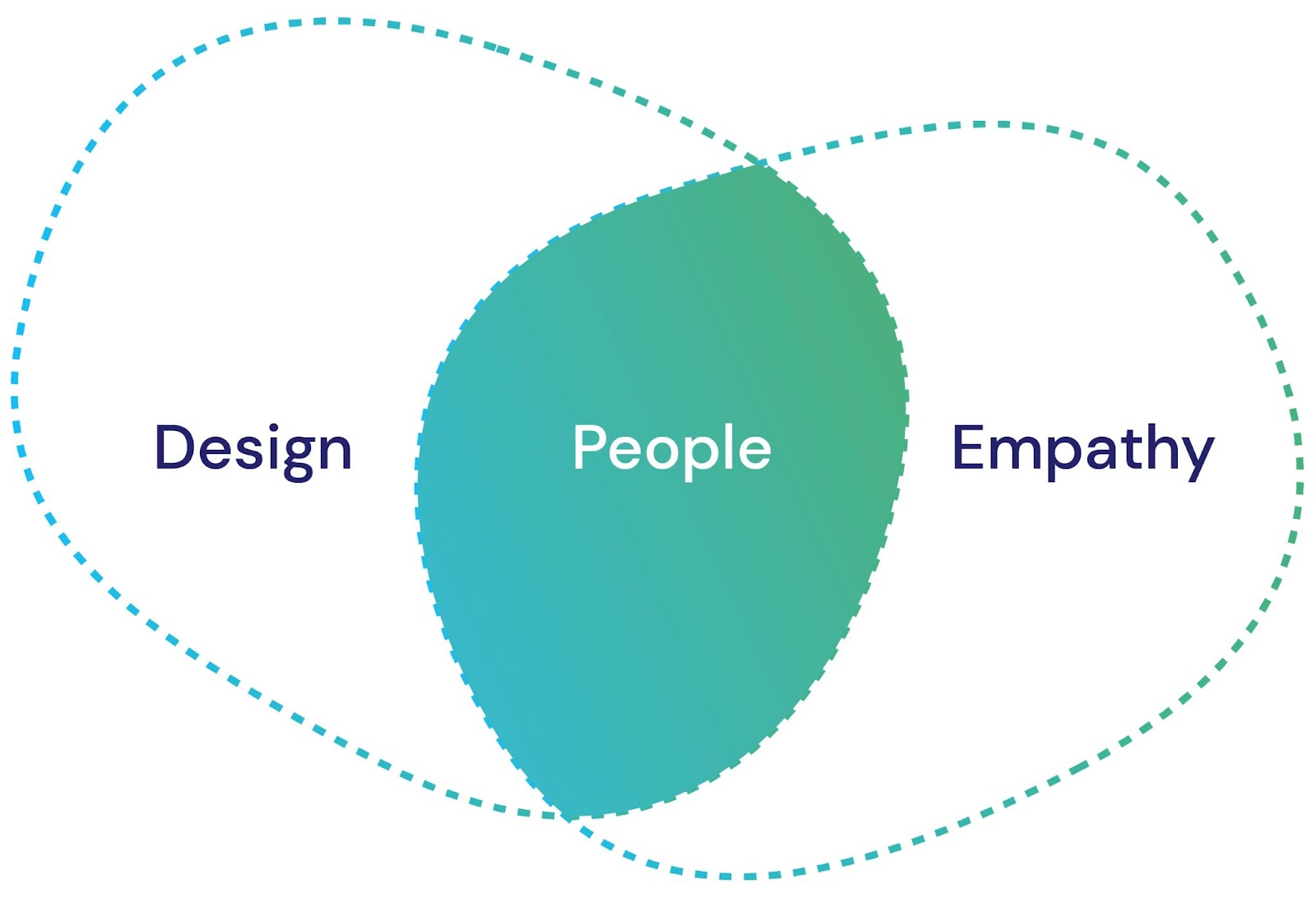
Human-centred design reminds us that people are at the centre of great things.
Are UX and CX design the same as human-centred design?
The human-centred design process influences both customer experience design (CX) and user experience design (UX). All three terms refer to modern design practices of researching the needs of people who will be making use of whatever is being worked on and then testing the designs and solutions with the same kind of people. Testing is done to verify the problems and solutions identified are the right things to work on. Below are some differences between UX and CX.
User Experience Design
UX is about understanding the context in which a thing will be used and can be very broadly applicable; from physical products like ketchup bottles to a government website that provides services to all the citizens of a country, UX researches the context and needs that coincide to create particular user experience needs and then analyses the research to see how they might alleviate friction in the process. This is not always related directly to a company’s customers as the users in any situation could take on many different roles; for example staff that stock the shelves in a supermarket are also users, as are the customers who buy products off the same shelves.
Customer Experience Design
CX focuses on the needs of an organisation with managing their customer’s experience and so focuses specifically on those who are already customers as well as potential customers. Depending on the demographics of a company’s customers, this may be a broad or particular group of people.
What are human-centred design key principles?

The first key principle to human-centred design is to focus on people.
Whether it’s a digital product like an app or a new system for stocking shelves — consider all the people involved. Considering people who have to place products on the shelf and the customers is an important part of seeing the interconnectedness of systems and products and how to make an experience, product or system better. By considering all the people who are connected to the product or system in question, the real reason for something not working to everyone’s benefit can become clear.
Digitally, this means thinking about the customers who use an app to buy products online as well as the staff on the other side of the app who have to use information to dispatch orders efficiently. By keeping an open mind, learning, empathising and understanding how all these people are interconnected, holistic design is possible, which leads us to the second principle of not just solving a problem, solving the right problem.

Find the right problem.
Don’t be the doctor, or designer, who just wants to treat the symptoms. By doing discovery, which is researching the problem space before taking further action, and learning about the people and systems involved, you will be able to find the root cause of an issue. If we take the example of an online store order’s delivery being late, it’s easy to assume there was a problem with the delivery staff, but with proper assessment and an open mind, you may find that the online site does not take down the address in a suitable manner for the country the delivery is being made in, and that this will negatively affect the delivery process.
A big part of identifying the right problem is not being sure what it is. That’s because rather than only assuming, human-centred design tests to find out what the real problem is. Human centred design is about having an idea or hypothesis and then testing to see if you are right about how you might make something better. Having assumptions is still a natural and integral part of this because you use your assumption as a starting point in identifying the potential problem and then testing to see if you were right.

Keep the big picture in mind.
A common way of referring to the big picture is also the North Star. In old-time navigation the North Star was crucial, just as having a single purpose is important in a design team or project. It keeps everyone aligned and moving in the same direction. This has also been referred to as “the why” of a business or the core reason that a company exists. Surprisingly, this core reason is not always just to make a profit. The why of a business is sometimes about providing an experience, assisting people to achieve a particular goal, making life easier or better in some way and many other personal motivations.
Don Norman, who is seen as a founding father of user experience design, gives a fantastic example of this with a camera. He reminds us that while a camera is a very complex device that does not have a simplified user experience, and that’s OK. This is because the ultimate goal is not for the user to have the simplest experience. The ultimate goal is to record a moment in time with a video or a photo. Taking a crisp photo or making a great video is the North Star of designing a camera, so the experience when making use of the camera’s interface is not the key focus point when designing for this goal. The goal will still be to provide a tool that can capture life beautifully. Whatever project you may be working on, making sure that everyone understands what your North Star is will help you all communicate effectively and work together to achieve the same goal in an aligned manner.
What are human-centred design techniques, methodologies and processes?
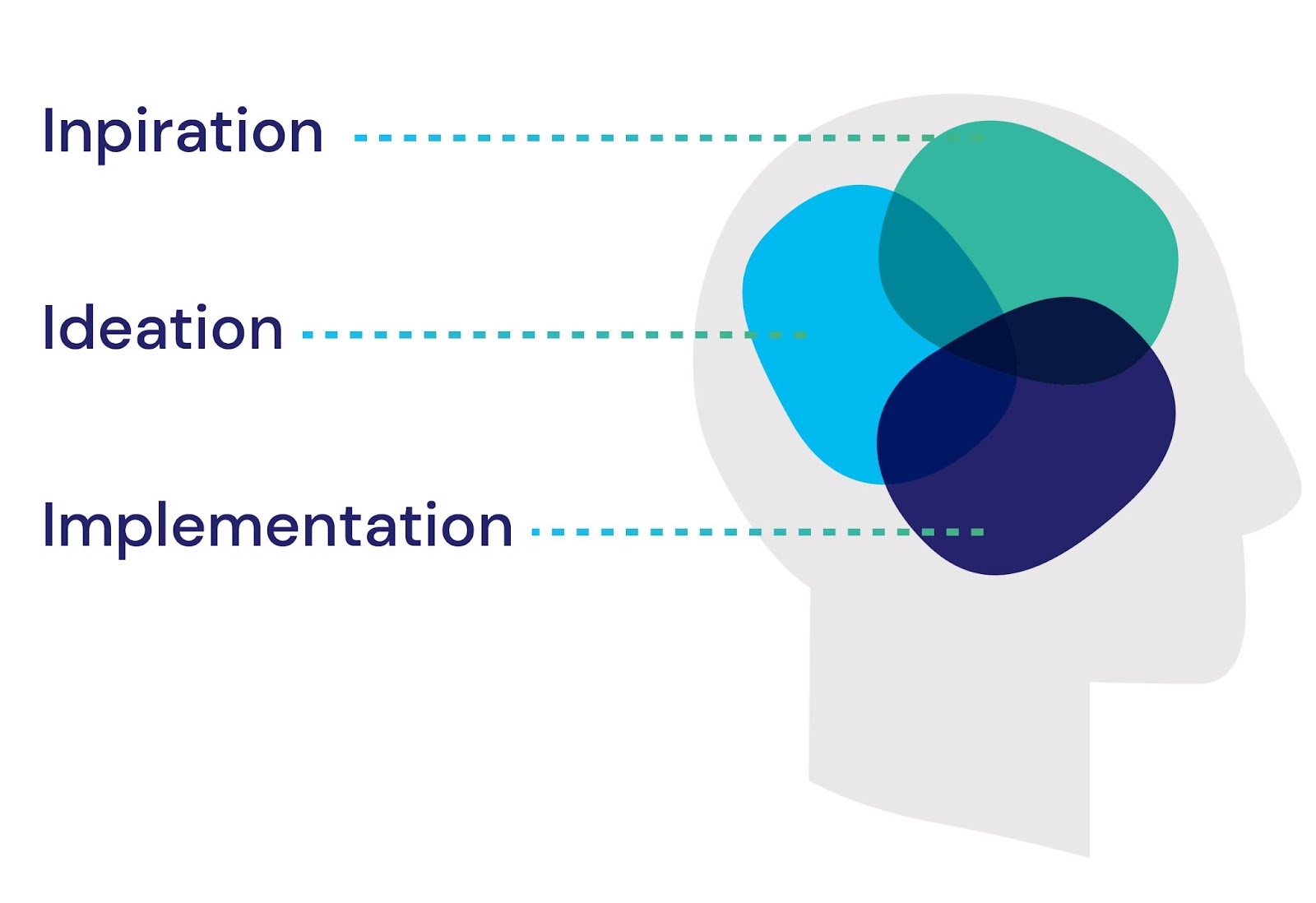
The three phases in the very non-linear process of human-centred design.
There are a lot of different methods and techniques that fall under the human-centred design umbrella. To break this up into manageable sections, we will look at three core phases in a human-centred design process, starting with inspiration.

Inspiration
This is essentially a learning phase. You observe, listen, and ask the question “why” a lot. Another term often used to describe this part of the process is the discovery phase, as you are observing and understanding the situation and the people involved. Profound understanding or deep empathy of the needs and available resources is very important for being able to move into the next phase.
Tools and techniques that can be used in this phase:
Information gathering techniques are the core of this phase. Interviews with customers, subject experts, current users or people who have a great interest in the project, also known as stakeholders, are the core participants who have necessary information. Stakeholders can be very important in deciding whether a project succeeds or fails, so often the initial phase will make use of techniques like stakeholder engagement, where stakeholders are invited to engage with the project. There is also stakeholder relationship mapping, where all the stakeholders who influence each other and the project are mapped out in order for the designer or design team to see who can assist in the progress of the project.
There are immersive research methods like ethnographic research, which is the observation of people while also in the same context with them, and service safaris that allow for designers to go out and deliberately experience a service in order to gather first-hand information. More passive methods of research are also possible such as literature review, and secondary research, also known as desktop research, that can be used to get information about competitors and other important factors.
A high-level understanding of the research methods used is to categorise them as quantitative or qualitative. Quantitative research like surveys may be used when a lot of data is needed to identify something, whereas qualitative research like user interviews, ethnographies or a diary study could be needed when very detailed information is needed.

Ideation
This is where you process all the information or synthesise it into insights that can help feed the ideas needed for creating potential solutions. At this stage, you would note the ideas and assumptions you have in order to test later and see what the best plan of action is.
Tools and techniques that can be used in this phase:
At this point, there would be a lot of research data from the inspiration phase that needs to be processed and understood using synthesis techniques. One key method is affinity mapping, which is taking information points from research and placing a single point on one sticky note. Each member of the team can participate in organising notes into themes that gradually emerge. This process can help identify unseen problems or pain points as well as advantages. From here, a problem statement can be generated that outlines the right problem to solve. Next, a “how might we” statement can be generated to open the possibility of any potential solutions; for example, “How might we improve the shelf-stocking experience?” This does not give any indication of a solution yet as the goal here is to keep things open for any potential ideas that can then be tested later. In digital design, the creation of wireframes, which are very simple visual representations of what an app or webpage might look like, can be drawn by hand or quickly put together using a tool like Figma for rapid prototyping and testing with users that can then be improved through the feedback given in testing.

Implementation
Once a solution has been chosen, iteration of the design can start to happen at a higher fidelity, in other words in more detail. Wireframes will be given more detail with the end goal being a high fidelity prototype that looks and moves just like the real thing would. There would be more testing at this stage to see how people react to the solution and if there are any improvements to add to another iteration or version. It’s important to note that human-centred design is not a linear process, it is iterative. This means you ideate or come up with ideas, prototype and test the ideas you choose to focus on and then repeat until you reach a limit in time, money or have found the right answer. This means that progress is important in human-centred design, not perfection.
The final part of the implementation phase is where efforts with stakeholders will come into play so that the design can reach the hands of those it was created for. This may mean choosing the correct way for a product to be made available or the right strategy for getting word out about it. It may also be making sure that the right online content strategy is used so that the “go to market” effort of getting the design into the hands it was created for is successful.
Why does human-centred design matter?
By taking a human-centered approach, products can resonate deeper with audiences – ultimately driving engagement and growth. Human-centered design is all about finding the perfect balance between desirability, viability, and feasibility. Just look at the recent success of design-driven companies like Eucalyptus, Car Next Door, and Canva to see this.
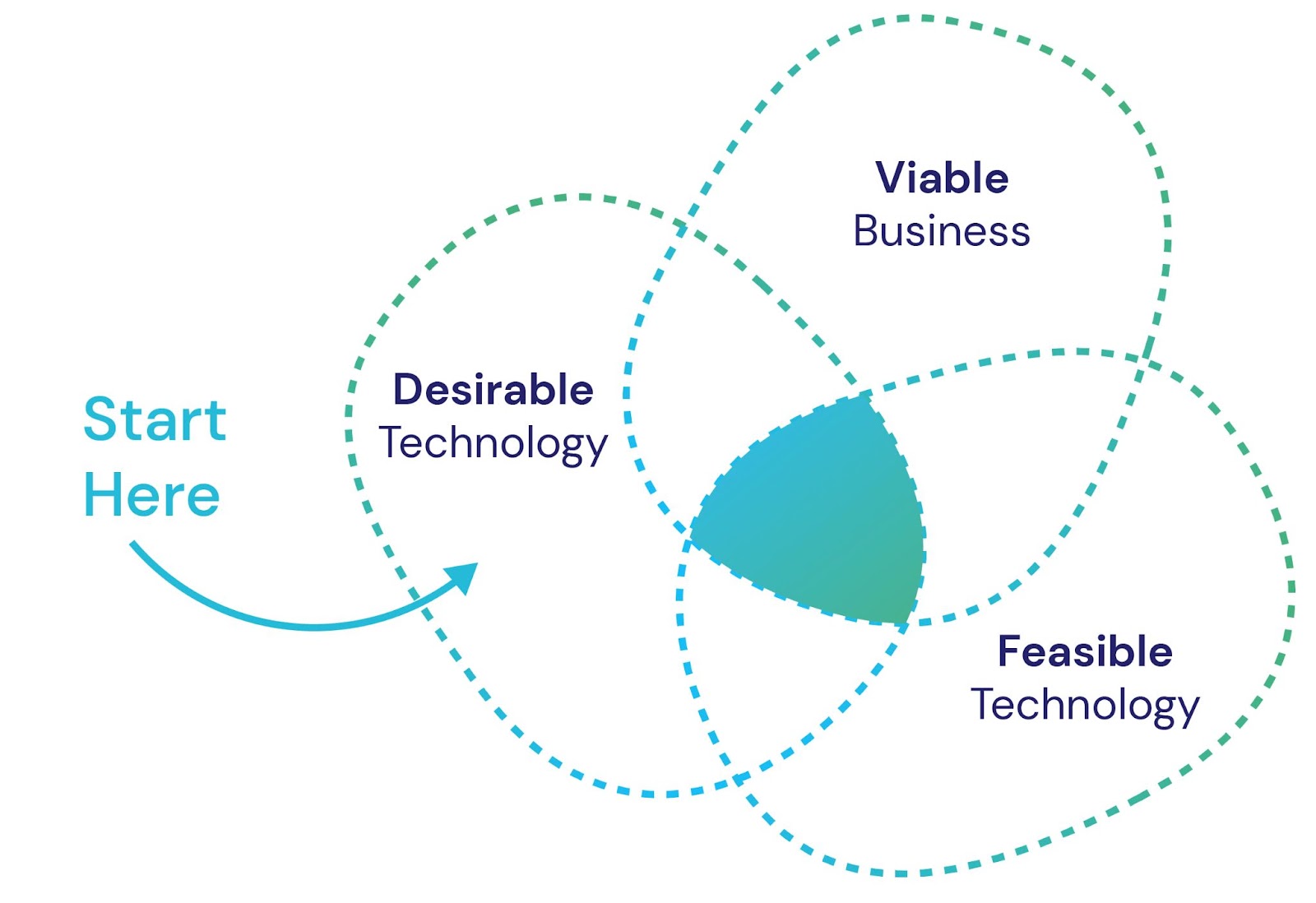
The sweet spot between desirability, viability and feasibility is what human-centred design identifies.
Great examples of human-centred design
By using a human-centred approach, fantastic examples of desirable, viable and feasible technology such as Vroom.org have been created. The Vroom app centres around assisting parents in finding moments, despite busy schedules, to assist their children with their mental development. By understanding the context of most busy Northern American parents, IDEO and the Bezos Family Foundation was able to craft a digital tool to assist with finding ways to supplement and support young children’s mental development every day.
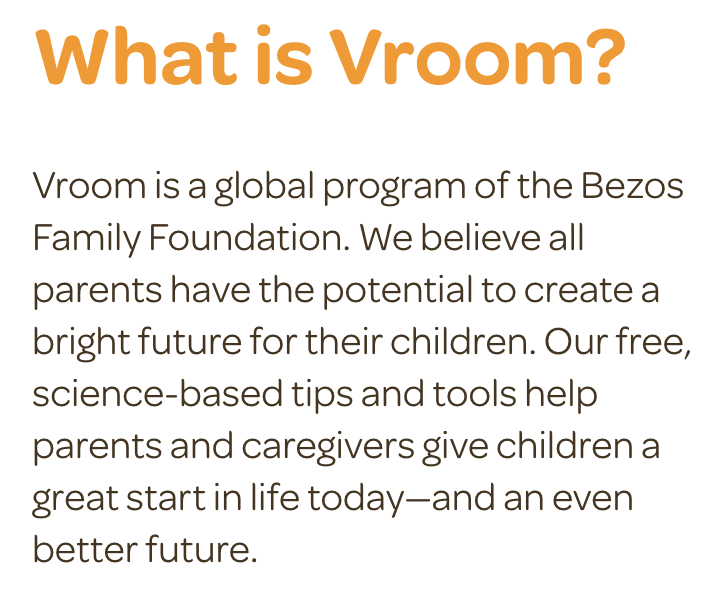
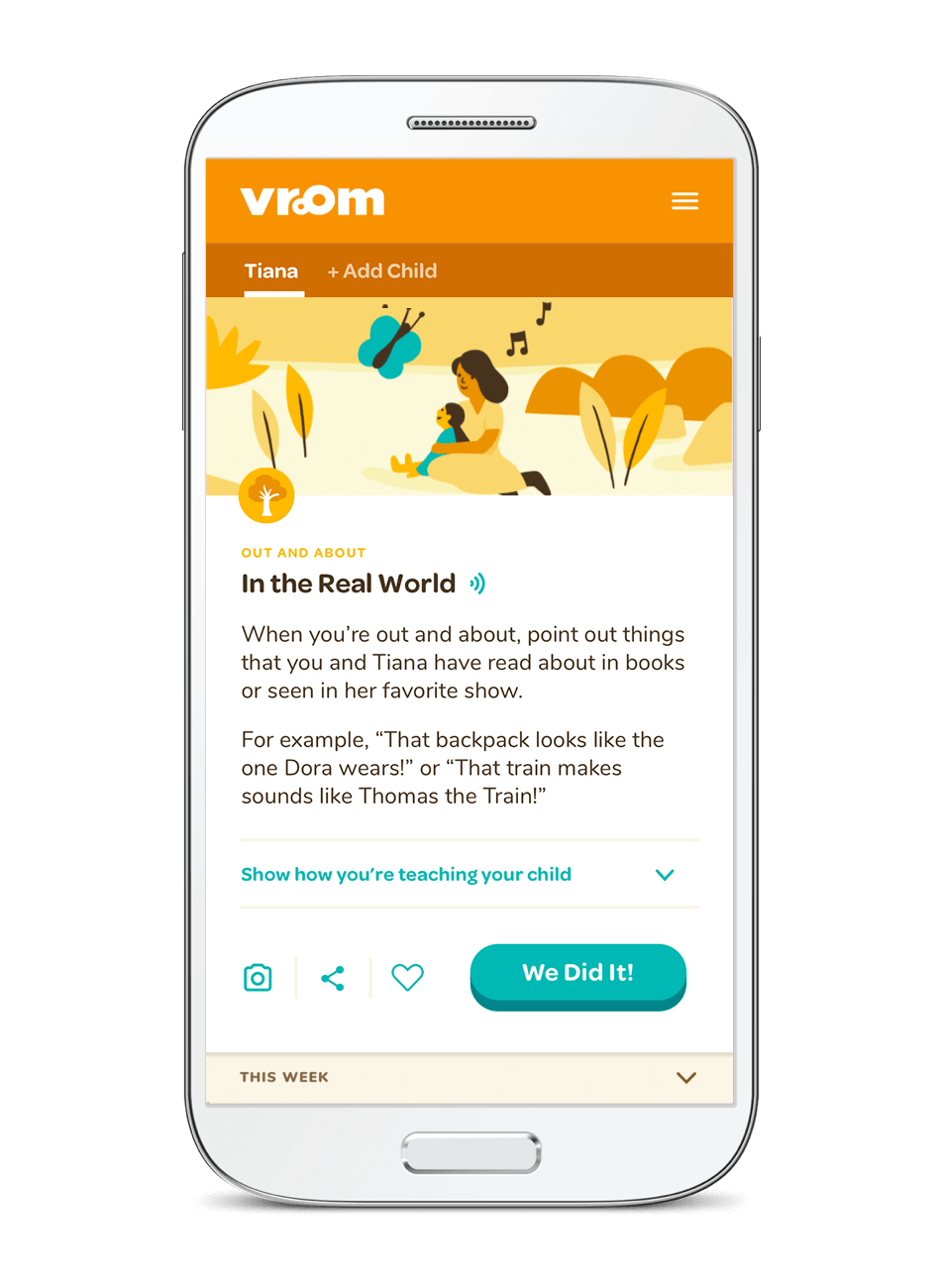
Who Uses Human-Centred Design?
There are many agencies, small businesses and Fortune 500 organisations that employ human-centred design to solve the right problems. The godfather of human-centred design is IDEO and they have brought the idea to the masses. Another example is our very own Melbourne-based human-centred design agency, Pretzel Lab.
What industries can use human-centred design?
At Pretzel Lab, we have utilised human-centred design in almost any industry you can think of, from the energy sector to healthcare. Key techniques like deep empathy, synthesis, rapid prototyping and testing have solved some pretty intricate problems. Human-centred design can be used to find and solve the right problems in any sector through holistic assessment that assists in identifying what is needed for long term growth and innovation.
Human-centred design books, learning resources and courses
If you want to learn more about human-centred design IDEO provides tools to help build your understanding. Another useful resource is the world leader in research-based user experience design — the Nielsen Norman Group. Their site provides a wealth of information on methods and techniques.